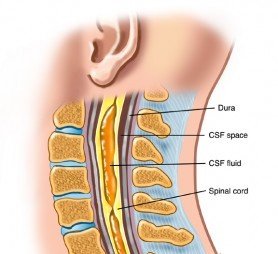Congenital vertebral dislocation (deformation disorder)
Congenital vertebral dislocation (deformation disorder)
Congenital vertebral dislocation, also referred to as a vertebral deformation disorder, is a rare but serious condition where one or more vertebrae in the spine are misaligned or dislocated from birth due to abnormal embryonic development. Unlike fractures or traumatic dislocations, these anomalies are present at birth and can cause spinal deformities, neurological issues, and progressive disability if left untreated. In Bangladesh, early detection of congenital spine anomalies remains a challenge due to the lack of routine prenatal imaging and limited awareness among primary healthcare providers. However, with the growing availability of advanced pediatric neurosurgical services, especially through Dr. Md. Nafaur Rahman—Assistant Professor of Pediatric Neurosurgery at the National Institute of Neurosciences & Hospital (NINS&H) and Chief Consultant at Bangladesh Paediatric Neurocare Centre—children now have access to state-of-the-art diagnostic and surgical care for complex vertebral disorders. 🧠 What Is Congenital Vertebral Dislocation? Congenital vertebral dislocation refers to the malalignment or subluxation of spinal vertebrae occurring due to defective segmentation or formation during fetal development. This condition is a type of congenital spinal deformity and often overlaps with: Hemivertebrae Block vertebrae Bar vertebrae Klippel-Feil syndrome Tethered cord syndrome Congenital scoliosis or kyphosis It is most commonly seen in the cervical (neck) or thoracolumbar (lower back) spine and may lead to spinal cord compression, limited neck/back motion, or visible deformity. 🚸 Common Symptoms in Bangladeshi Children Children with congenital vertebral dislocation may present with: Abnormally tilted head or short neck Limited range of motion in the neck or spine Visible spinal curvature (scoliosis or kyphosis) Delayed milestones or developmental delay Balance problems or difficulty walking Limb weakness, numbness, or bladder/bowel control issues Torticollis (abnormal neck posture) Uneven shoulder or pelvic alignment In rural areas of Bangladesh, many of these children are misdiagnosed with rickets, cerebral palsy, or muscular dystrophy, delaying appropriate neurosurgical referral. 🏥 Diagnosis of Congenital Vertebral Dislocation in Bangladesh With increasing access to diagnostic tools, children can now be properly assessed in Dhaka and other major cities. At NINS&H and Bangladesh Paediatric Neurocare Centre, the following imaging modalities are routinely used: ✅ Spinal X-rays (AP, lateral, and dynamic views): Identify vertebral alignment, fusion, or segmentation defects ✅ MRI of the spine: Detects spinal cord compression, tethered cord, or syrinx ✅ CT scan with 3D reconstruction: Provides detailed visualization of bone deformities ✅ Ultrasound of kidneys and heart: Checks for associated anomalies (especially in syndromic cases like VACTERL) ✅ Genetic and neurological evaluation Especially for children with multiple congenital anomalies ⚕️ Treatment Options for Congenital Vertebral Dislocation in Bangladesh Treatment depends on the child’s age, symptoms, location and severity of the deformity, and presence of neurological complications. ✅ Non-Surgical Management (if mild and stable): Regular observation with spinal imaging Physiotherapy for neck/back mobility Postural correction and activity modification Bracing in early scoliosis cases 🚨 Surgical Treatment (if progressive, unstable, or symptomatic): Surgery is required in children who show: Progressive scoliosis or kyphosis Spinal cord compression or myelopathy Instability of the vertebral column Neurological symptoms (e.g., limb weakness, bladder dysfunction) Severe cosmetic deformity affecting quality of life 🛠️ Surgical Procedures Include: Spinal cord decompression and realignment Posterior fusion with instrumentation (rods and screws) Resection of malformed vertebra (e.g., hemivertebra removal) Tethered cord release if associated Growth-friendly surgery for younger children (e.g., expandable rods) Dr. Md. Nafaur Rahman uses pediatric spinal implants, neuronavigation, and intraoperative neuromonitoring to ensure high safety and precision, especially in the delicate spinal cord regions. 🔄 Post-Surgical Recovery and Long-Term Monitoring Following surgery, children typically require: Short-term bracing Physical rehabilitation Growth monitoring with serial X-rays School reintegration with activity adjustments Neurological check-ups to ensure recovery With early intervention, most children resume daily activities and achieve significant improvement in posture, balance, and confidence. 👨⚕️ Why Choose Dr. Md. Nafaur Rahman for Congenital Vertebral Disorders in Bangladesh? 🎓 Assistant Professor, Pediatric Neurosurgery, NINS&H 🏥 Chief Consultant, Bangladesh Paediatric Neurocare Centre 🧠 Extensive experience in complex congenital spinal deformities 🛠️ Specialist in pediatric spine surgery with modern techniques 🇧🇩 Known across Bangladesh for compassionate and expert care for children with spinal anomalies 🌍 Serving Patients Nationwide Dr. Nafaur Rahman regularly treats children referred from all over Dhaka, Chattogram, Sylhet, Rajshahi, Khulna, Barisal, Mymensingh, and rural districts. Teleconsultation and digital image review options are available for long-distance patients. 📞 Appointment and Referral Information 📱 Serial/Booking Contacts: 📞 +8801912988182 📞 +8801607033535 🌐 Visit: www.neurosurgeonnafaur.com 📍 Locations: National Institute of Neurosciences & Hospital (NINS&H), Dhaka Bangladesh Paediatric Neurocare Centre, Dhaka












